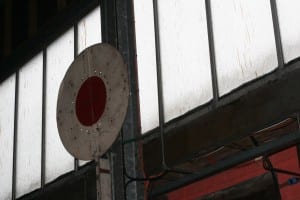After performing at the Lincoln Granstand on the 8th of May I have certainly encountered new experiences and developed as a performer, practitioner and human being. I believe my performance had many strengths but similarly there were weaknesses and definite points I could have improved on. Audience members were regular and consistent as soon as one had left another would be ready waiting at the door and all members played their role well without realising. My favourite audience members were the ones who did not know whether to laugh or cry, to smile or breakdown, the confusion on their face really fuels you as a performer, this is constantly the reaction I aim to achieve as it means you have made an impact. The direction in the space worked well, when the audience were taken into the cubicle and locked in with me eye contact was maintained consistently, whilst it was hard to keep up I feel I did a superb job and it served an essential role in creating the audience/performer relationship. I also feel the concept of eye contact maintained through the reflection of the mirror was fantastic as you never lose your audience, you always remind them of your presence and combined with the delivery of my narrative, that I did not rush through but rather took my time and enjoyed, the audience members seemed to be captivated.
In retrospect the items I put on my body (hay, mud, chalk etc..) went well, although, I feel I could have improved on this, I believed that I should have undergone more processes, such as horse-related consumption of one type or another. I also believe I could have had more hay on me, more mud smothered on my body, I believe I had the desired effect but I would have loved to really go over the top with this. Another improvement to be made would be the narrative, I wish instead of only removing my top when locked in the cubicle that I had created a narrative where I was entirely nude in the cubicle with the audience member. This does have its flaws in that it would make some audience members very uncomfortable but it would maintain that desired message that my clothes had decayed, humans had caused this decay, that direct eye contact when like that would have had a huge impact on the audience member.
If I were to create this performance again, I would want to spread it to a wider audience not just one to one, I would like to introduce more physical contact between the audience member and I such as allowing them to feed me, water me or pet me. I believe this would create a more definitive transformation from human to horse. I also would have used the decayed sinks more, I would like to have explored would I could have created in that space. Whilst it was a perfect representation of my whole piece I feel it needed something more just to create a more visual impact.
This process has taught me so much about myself and the varying degrees of performance and everyday life. It has taught me to appreciate the history of things you would normally seem irrelevant and it taught me that only when you are truly lost are you found.




![Vason, M. (2013) ‘Collaborative Actions #1’. [electronic print] Available at: http://lncn.eu/dkx4 [Accessed 28 February 2014].](https://sitespecific2014mpi.blogs.lincoln.ac.uk/files/2014/02/Collaborative-Actions-1-led-by-Manuel-Vason-work-created-during-the-3rd-Thessaloniki-Performance-Festival-of-the-4th-Biennale-of-Contemporary-Art-2013-1024x682.jpg)